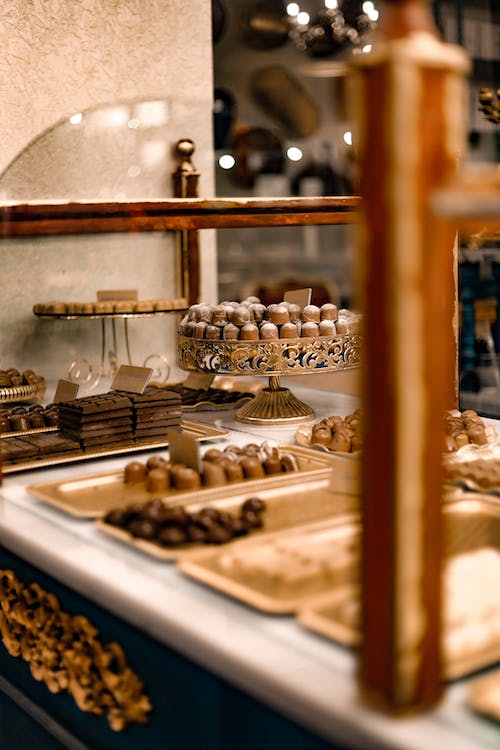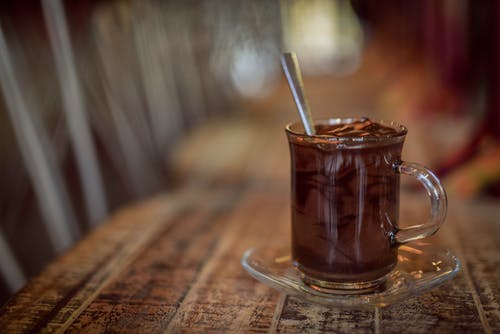Interesting Facts about Chocolate
No need for a formal and lengthy introduction: chocolate is the most-loved confection by millions of people from all over the world! We use it as a treat, in the most scrumptious desserts, and also as a quick way to lift our mood.
However, there’s more to chocolate than meets the eye. You might consume chocolate in some form on the regular, but there are probably several aspects to this confectionary that you don’t realize. Here are some of the many scrumptious facts about chocolate that you’ll surely enjoy knowing!
The Origin of the Word
The word “chocolate” originated from the Nahuatl word “xocoatl,” referring to the bitter, spicy beverage that the Aztecs prepared from cocoa beans. Some narrations might have different pronunciations, but the general sound of the word is enough to denote that indulgent treat for people over the globe.
Blond Chocolate
While there are the usual milk, dark and white chocolates, there is a rare kind of chocolate called “blond chocolate.” Actually, this was created by pure accident, where some white chocolate was left to melt in a pan with boiling water underneath. After about 10 hours, the white chocolate had turned blond and creamy, giving off the aroma of caramelized milk and acquired some combined hints of salt and biscuit.
The water underneath the pan gave the effect of a double boiler, which many home cooks already use to melt their chocolate without burning it. The same thing happened here, only it was allowed to go on for a long time.
This led to the creation of the world’s first blond chocolate, the “Dulcey,” which was manufactured by the French-based premium chocolate maker Valrhona. We can try to make our own blond chocolate at home, but it will take quite a bit of time!
Used for Currency
We all love and value chocolate to a large extent. Some children might even swap something precious for a bar of chocolate in the playground. However, the value of chocolate was actually once so high that it was utilized as an actual currency!
Chocolate was so well loved by the Aztecs during the peak of their civilization that cacao seeds were even used as a form of currency. Granted, this isn’t the chocolate form we know today, but it was still the main raw ingredient.
The taste, aroma, and health benefits revived from this bean had a high enough value to serve as a universal unit for bartering, making it one of the earlier forms of currency.
The First Chocolate Bar
Chocolate had long been first enjoyed as a beverage — in fact, for most of its history, it has been consumed 90% in liquid form rather than its solid form. Eventually, people started adding ingredients to the bitter chocolate drink that was so well-liked. The main ingredients here were milk and sugar, which enhanced the chocolatey taste and made it even more popular.
It shouldn’t be surprising that the first chocolate bar was invented by Cadbury in 1842. The company finally hit upon the idea of having chocolate in a solid form, thus making it a packageable product that one can sell.
The rest is history, with Cadbury being one of the leading chocolate confectioners throughout the world. They provide chocolate in all forms and tastes to almost every country, though there is some stiff competition in the market from Hershey’s, Nestle, Milka, and several local confectioners in every area.
White Chocolate Isn’t Chocolate
Purist chocolate lovers would usually scoff at the idea of white ‘chocolate’, as it isn’t actually the real deal. This is because white chocolate doesn’t contain cocoa solids or cocoa liquor. However, it does have something from the cocoa bean — mostly cocoa butter.
Still, this isn’t enough to categorize it as being among the chocolate family. However, the marketing for white chocolate is pretty set, so there’s no harm in letting this one pass. There are quite a lot of white chocolate lovers out there as well. Plus, we all know how delicious and fancy white chocolate can be!
Chocolate as Aromatherapy?
Aromatherapy is the practice of healing and/or relaxing through the process of inhaling scents. It has been found quite effective for some people, even if there’s a placebo effect. Usually, one accomplishes the inhaling by using essential oils, placing a few drops in a diffuser and breathing in the scent.
However, there is a strong following for chocolate as being a part of aromatherapy as well. And why not? It smells as good as it tastes. This might be because smelling it kicks off the action of the theta brain waves, which help you relax. Still, will it really be all that relaxing to just smell chocolate and not consume it?
Making Chocolates is Not as Easy as it Sounds
With the chocolate industry booming all year round and especially during the holidays, one might be tempted to whip up a batch right at home. However, this is easier said than done.
Getting raw cacao beans is quite difficult, for one thing. Even if you do manage to get the real deal, actually making the chocolate without burning, having it cool without seizing up, and preventing the fat from showing demand a high level of skill.
It takes a lot of hard work to transform all of the cacao beans into these yummy chocolatey treats. In fact, it takes about 400 cacao beans to make a single pound of chocolate!
Chocolate and Heart Health
No, we’re not just saying that to make you feel good. Chocolates, particularly dark chocolates, actually do your heart some good! According to some studies, eating chocolates every day will minimize the risk of heart ailments by about a third.
Of course, this doesn’t mean that you eat as many chocolates and of whatever kind you please! It’s best to invest in the real, bittersweet dark chocolate and have a piece every day.
Chocolates Make Us Happy
This is one fact that we all feel is intrinsically true, but it also has some scientific basis. Even just unwrapping a bar of chocolate sends a smile to our faces! And why do chocolates make us giddy? Blame it on some of the chocolate’s properties:
- Tryptophan – tryptophan is used by the brain to produce serotonin, which, as many of us know, can trigger feelings of happiness.
- Phenylethylalanine – sometimes dubbed as the “love drug,” this type of chemical arouses feelings of excitement, nervousness, and euphoria. This is just like the feeling when you’re in love for the first time or glancing at your crush. A love life doesn’t matter when you have chocolates, right?
- Theomobrine – a stimulant that causes one to feel “high”, a somewhat drug-like effect. Fortunately, there are no terrible side effects to chocolate, though overconsumption is still not recommended.
Chocolates and Oral Health
Remember your mom telling you not to eat chocolate candies because they were bad for your teeth? Now there’s another reason for the chocoholics to celebrate — chocolates have anti-bacterial properties which protect your mouth and can even help in preventing tooth decay. Again, keep in mind that we’re talking about the dark chocolate varieties, not milk or white chocolate.
However, this doesn’t mean you don’t have to brush your teeth after eating a chocolate bar. It’s still food, and will contain sugar in some form or the other.
Conclusion
Chocolate has a rich history behind it, so it’s worth reading up on the subject if you’re a fan. Taking the subject further might even introduce you to new kinds of chocolate, leading to wonderful new culinary experiences. Here’s to many more decades of chocolate goodness all around the globe!


